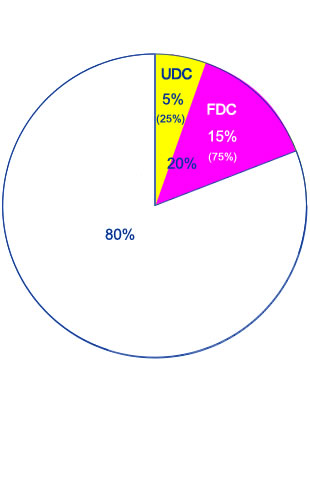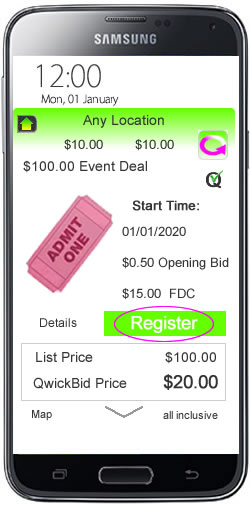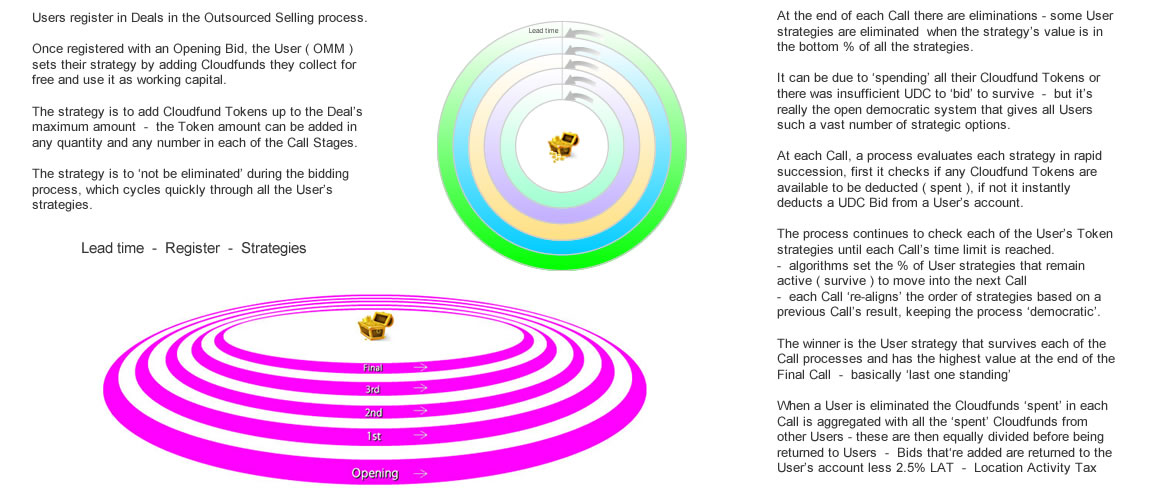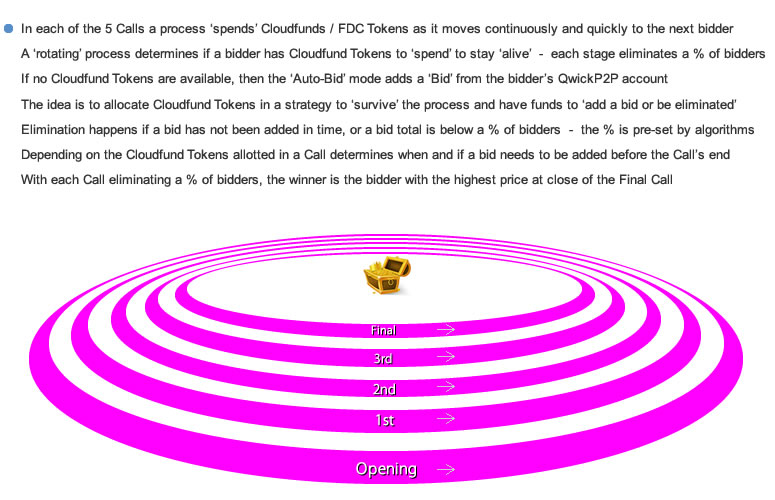
 . . brings a decentralized and democratic economic platform to the real economy!
. . brings a decentralized and democratic economic platform to the real economy!Cloud Capital Chamber of Economies Cloudfunding CloudfundMe Buyers Crowd Sellers P2P Groups Places SignUp
DeLE Markets RingLink SODA FDC Economic Engine Smart Contracts UDC DFDC UDI PriceDemand QwickFlip Sales Division Co-Ops


Cloudfunding operates as a completely autonomous economic platform performing all the necessary commerce and trade mechanics to keep the flow of capital moving through the local economies.
Cloudfunding outsources the selling of the inventory that sellers list at full selling prices, ( sellers pay no fees or commissions to list and sell ) - the bidding process has a dual purpose:
- one is to fully monetize the full selling prices of the inventory using a deep algorithmic process that moves inventory through an automatic process, without it needing any direct participating users - the users, the Open Market Makers receive FDC - Free Digital Capital when sellers list their inventory - this FDC is free working capital that is strategically allocated by an OMM or automatically allocated ready for the bidding process - the monetization of the product or service comes from a users' secondary account holding validated UDC - Universally Decentralized Capital.
- the second happens after the process once the product or service is exchanged and UDC payment is made ( these payments are the aggregate demand ), there's a distribution of the UDC to the Open Market Makers - OMMs who participated in the process, validating a percentage of the FDC ( free working capital ) that was allocated and returned back to the OMM after a product or service was purchased.
When a seller lists their inventory, whether it's a product or a service, each unit is individually listed and starts the process of being tokenized ( minted ) so that when it's fully monetized and validated, and ready to be purchased, each unit is locked into a Smart Contract that fully releases the Token's Ownership to the buyer on the exchange of payment.
The lead time only takes a few seconds or minutes for most inventory, or can be scheduled to various hours or days to suit the overall demand - during the lead time the global users in the network can register their interest in participating - users can manually or preset their accounts to register to bid for inventories in countries, cities, industries and businesses, setting strategies ready for the bidding.
The 5 step bidding process operates on a global scale and can perform at an exponential scale, processing inventories in bulk or individual units across multiple global economies in real time, all tracked via the location activity - the process is almost instant when a seller lists their inventories, within a few seconds the inventory is monetized and ready for release to local or global buyers to compete with Price Demand.
The bidding process applies a series of protocols including a Game Theory to level the playing field across global users who can participate without the financial restraints that limit conventional methods - the use of free working capital to set strategies, takes up to 75% of a maximum 20% of the full selling prices of any product or service deal, which helps to dilute ( lower ) the entry point for a broader number of users.
Example of how the bidding protocol process is diluted to allow a larger participation of the global crowd users
- 100% full selling prices
- Only a maximum of 20% of the 100% is set aside for the bidding process
- 15% of the total ( or 75% max of that 20% ) is allocated for FDC Token strategies - free working capital
- 5% of the total ( remaining 25% of that 20% ) is set aside for the automatic UDC bidding


The bidding itself is automatic, and users can set strategies, or set to automatically apply strategies within ranges that can be adjusted prior to process - users initially collect Free Digital Capital - FDC ( sometimes called Cloud Capital and Cloudfunds ) and uses it in strategies as free working capital to help win deals, and mainly to get the FDC validated into UDC - the bidding involves using FDC Tokens for the majority of the bid strategy ( up to 75% of the 20% ) and only use UDC to bid with ( automatically ), to 'survive' for as long as possible during the automated process.
This means that only a maximum 20% of the full selling prices is used in any deal process to fully monetize each deal with the full selling prices and to find a winner, which means that only 15% of the full selling prices is used to allocate the free working capital FDC - free working capital can be allocated randomly by the Auto function or allocate within the strategies of users, for some or all deals.
The remaining 25% of that 20%, which is only 5% of the initial 100% full selling price is where UDC is added as the actual bidding value to remain alive in the process - if less FDC Tokens are used in the user's strategies in the 5 Calls, then more UDC may need to be used to 'stay alive' during the Calls - there are so many strategies to select that each deal process becomes unique.
There're 5 stage Calls in each deal process lasting over 15 minutes and reducing down to deals only taking 15 seconds to complete to find a winner - multiple number of deals are processed simultaneously.
While the bidding process essentially provides the distribution and validation of UDC to flow towards users, in the background there's an algorithm process that fully monetizes the products and services without hindering the users from competing to win deals, and share in the distribution of the final Buyer's payment ( aggregate demand ).
A way to look at the process is to think of how the Lottery system works, as the balls drop at each Call there are a certain amount of ticket holders who are eliminated from the main prize until there's a winner - Cloudfunding's process works by eliminating users at each Call until there is a winner as well,
- the difference is that the final buying price of the product or service being processed will be sold in UDC - it's this value that's equally distributed with the number of users remaining at the end of each Call.
- the registration fee and UDC Bids are returned to participates less a small tax ( 2.5% LAT fee ) - the quantity of FDC used at each Call is equally distributed back across the successful users in each Call.
- the strategy of allocating the FDC Tokens, up to the maximum for each deal, increases the number of possibilities enormously.
- the registering and bidding strategies in various products and industries and locations operates automatically in the background, still giving users the control over their strategies before the bidding begins.
It's the number of processes in the 24/7 that helps distribute wealth across a greater number of users in various locations around the world that makes the big difference - it stimulates and monetizes productivity in industries and locations that may not always have a level playing field - it pushes a democratic and decentralized way of finding an equilibrium ( Balance of Payments ) across global supply and demand through Direct Foreign Decentralized Capital moving seamlessly between local economies, effectively avoiding the interference and rent-seeking approach of the financial system.
The the DEEP - Decentralized Economic Engine for Productivity, is where global users can participate in a democratic process that flows through to universally distributed Incomes across local economies.


| Outsourced Selling process is for New and Used The advanced mechanics behind the bidding process in QwickBids, especially with the pre-bidding strategy, will redefine how selling is done in the future. Online bidding is known for being time consuming and unfair, more so annoying when someone can jump in at the last second and take the win, Online bidding is often seen as the way for sellers to clear stock, at whatever the price - Online bidding has come to be known as the place to go when something can't be sold by normal selling, it's a market place to get rid of things, just throw it onto an auction site and get whatever price. That destructive selling method is antiquated Well that's not how QwickBids works - firstly the mechanics are more productive and focused on making commerce fair for both buyers and sellers - giving longevity in difficult markets for businesses and buying power for buyers. For starters QwickBids sets up the sell high and buy low dynamics where the seller gets the full 100% selling prices and the buyers can buy at discounts they can't ignore. The QwickPic Platform's technology disrupts more than the bidding process, it changes the limited selling options that have been around forever - many of the costly steps to selling have been eliminated so now a seller only needs to focus on supply and customer service. When a product or service is processed the Deals generate a Smart Contract that can only be executed when it's released to a seller's local buyers, who then need to use Price Demand to be the first buyer to click 'Buy Now' as the price cascades down from the full selling price to as low as 20%, depending in the final winning bid price. No fees Sellers don't pay listing or highlighting fees, no advertising or payment fees Apart from sellers being able to list and pay no fees for selling items, the sellers get the full value of their sold items - why, because the QwickPic Platform works by increasing the demand for products and services, to do that, incentives are added to ensure the supply flows are directed to meet the demand. Cloudfunds are an integral part of the neutral global trading platform in which the digital form of a free and neutral universal trading unit of account helps monetize businesses and individuals, without adding the barriers and penalties used by the finance industry |
|||||||||||||||||||
 |
|||||||||||||||||||
The paradigm shift with Cloudfunding and Free Digital Capital is to operate and be governed within post economic activity and productivity value, whereas Modern Banking operates within pre economic activity with credit and debt, and is not governed or constrained by actual productivity - Cloudfunding operates on a global scale with true productivity, which drive global economic growth, without incurring debt. Cloud Capital / Free Digital Capital - FDC are Cloudfunds - it's the free working capital for the Digital Era, it's free to collect, has no fees and never needs to be paid back, ever! The foundation of Cloudfunding lies in how FDC is created and validated from actual productivity in commerce across global economies - the process of validating FDC against productivity and then distributing the value freely with the global crowd differs totally to how Banking offers credit and debt to be distributed before the possibility of any productivity. Collectively FDC is able to be used to strategize on a global scale by being able to cross borders to freely and democratically drive productivity in any country where Sellers want to sell their inventory, new or old - DFDC - Direct Foreign Decentralized Capital |
|||||||||||||||||||
 Just as with New Product any Used Item can be sold with Outsourced Selling  Seller gets 'Fair Price' - Buyer pays as low as 20% |
|||||||||||||||||||
When a Used Item is won by an OMM Items get released in QwickFlip Buys where Price Demand finds the demand starting with the full Selling Price cascading down to the low Buying Price set in the Outsourced Selling. |
|||||||||||||||||||
| See how a QwickBids Deal looks in the Lead-up time before the Opening Call - the lead-up time is when Cloudfunds can be adjusted to set a strategy. QwickBids can be seen in a smaller window so you can keep looking at other things but keep up to date - QwickBids Buyers have 2 ways of getting their hands on products and services at these low 20% prices, one is bid for deals early along with the Global Crowd, the other way is to buy a deal if it reaches the Open Market where QwickBuys has the Price Demand. QwickBids is the home of the Global Crowd, who use it as their business base, the Global Crowd does much of the heavy lifting by being the dominant bidders behind each deal that gets to the Open Market. Something extra that QwickBids brings to the party is that deals can be listed for any sellable product or service that can be exchanged for money, things like ebooks, subscriptions, music downloads, anything that has a value and is deemed to be legal. To meet global productivity there needs to be more sustainable ways to stimulate supply and demand, markets need to be more productive and not be so erratic that it harms buyers and sellers - the QwickPic Platform helps to provide that need. To meet that consistent flow between supply and demand sellers need to have some predictability and confidence in selling their inventory, and buyers want to see Competitive prices in their markets, this is where feature services like Price Demand help to find the demand. Price Demand is where Users gain from participating in the QwickBids process to get their share of the distribution of the amount of the Buying Prices paid by a Buyer. Early birds can still get the advantage! Buyers have the chance to earn and use the majority of their bidding total using Cloudfunds, the Cloudfunds spent during the processing are returned to bidders as an average with other bidders who reach to the same stage - it helps keep bidders on their toes with their strategies. Strategies are allocating Cloudfunds into 5 boxes before the start of the bidding process - Cloudfunds give the advantage of bidding for deals to everyone, it makes it absolutely fair for every user who wants to bid, the number of combinations in allocating numbers into the 5 boxes is huge - this means that bidders will have a low number of Cloudfunds in some boxes and that means the Cloudfunds are spent faster, that's when a bidder needs to have funds in their QwickP2P account ready to 'add a bid or be eliminated' at the end of a Call stage. Only around 5% maximum of the seller's full prices will be spent in bidding with UDC if the maximum Cloudfund Tokens are used in the pre-bid strategies. Even the bids spent from the QwickP2P account are returned to each bidder apart from a small 2.5% Location Activity Tax - LAT that bidders still benefit from in their UDI Portfolios - anyone can become an OMM to earn a business profit. It's as simple as placing some numbers in 5 little boxes. Step 1. Register - Opening Bids are automatically debited from your QwickP2P account Step 2. Add some Cloudfund Tokens - there's a maximum number of Tokens that can be added - Cloudfund Tokens are deducted from your Cloudfund account - ( each deal mints a unique token value specific for each deal ) Step 3. Adjust your strategy - You can adjust your Cloudfund Token strategy as many times as you want before the start of the Opening Call. Step 4. Any required Bids are automatically deducted from your UDC QwickP2P account - In each of the 5 stages during the bidding, if your Cloudfund Tokens are all 'spent' in any of the Calls then a UDC bid is added automatically so you are not eliminated at the end of any of the stages. - if you are eliminated because the time lapsed or there were insufficient UDC funds to Bid, then the finalization process returns an equal share of the all Cloudfund Tokens 'spent' by OMMs in each Call - any UDC Bids are returned to each OMM, less a small LAT deduction. |
|||||||||||||||||||
Watch how a typical deal plays out  |
|||||||||||||||||||
QwickBids disrupts the dynamics of commerce - sellers have only ever received what a buyer agrees to pay QwickBids changes those dynamics by splitting the buyer and seller and gives the new global players the tools to do the job of selling. Separating buyers from sellers solves commerce's dilemma in supply and demand - finding a fair and continuous flow between buyer and seller. The new player is the Global Crowd, being a virtual wholesaler between a buyer and seller New dynamics lead to new tools that can solve the supply and demand dilemma - it gives low buying prices and full selling prices in the same commerce action. QwickBids sets the changes even before the bidding begins, by giving all bidders the chance to use Cloudfunds to preset a bidding strategy that plays out during the main bidding process. Cloudfunds are freely earned just by viewing QwickPic images showing products and services that sellers from around the world want to sell and can be 'spent' on bid strategies and to buy various products and services. All that a bidder needs to do is collect Cloudfunds and use as many as they want in their strategy, then add a small amount of funds to their QwickPay account and let the automatic bidding do the rest. It's not just new products that can be sold using the mechanics of QwickBids, there's also QwickFlip that can sell used items that still gives sellers the way to get their full fair prices while giving buyers the way to pay as low as 20%. |
|||||||||||||||||||
| Here's an example at the pre-bidding stage - see a snap shot of a deal in progress - register multiple deals | |||||||||||||||||||
| Hide All | Call Strategy | Lead Up Time Strategy | Lead Up Strategy - Multiple Deals | ||||||||||||||||
| Product | Stage Call | Opening Call l | First Call l | Second Call l | Third Call l | Final Call | |||||||||||||
 |
01:10:25 | 1 | $0.50 | $0.50 | $0.00 | $0.40 | $0.00 | $0.30 | $0.00 | $0.20 | $0.00 | $0.10 | |||||||
| 8 | $2.00 | 7 | $1.75 | 6 | $1.50 | 2 | $0.50 | 10 | $2.50 | ||||||||||
| $100.00 | |||||||||||||||||||
| $8.75 | Total # of $0.25 Cloudfund Tokens allocated in your strategy is : | 33 / 60 | |||||||||||||||||
| Cloudfund Token strategy changes can be made up to the Opening Call | |||||||||||||||||||
| - - - - - - - - - - - - - - - - - - - - - - - - - - - - - - - - - - - - - - - - - - - - - - - - - - - - - - - - - - - - - - - - - - - - - - - - - - - - - - - - - | |||||||||||||||||||
| Cloudfunds strategy is simply allocating a maximum number of Cloudfunds into 5 boxes, which represent the 5 stages of the bidding process - the 5 stages in the bidding process take 15 minutes or 15 seconds to complete, this is after a lead-up period where users set their strategies - in each of the 5 stages there is an elimination process that checks to see what number of Cloudfund Tokens remains active for a bidder - if a bidders Cloudfunds have already been spent in the elimination process then the only way to not be eliminated is to 'add a bid' - the 'Auto' mode looks after the bidding - it's a much faster process than users adding bids from various ranges of internet connection - a certain number of bidders get eliminated at the end of each of the 5 stages until there is a final winner - the maximum bid total is a combination of Cloudfunds and whatever bids from the QwickP2P account - a winner will either be the last bidder to reach the max 20% buying price or last bidder with the highest bid total at the end of the 15 minutes - when a local Buyer wins via QwickBuys and Price Demand then the Collection Code is used to collect their Deal |
|||||||||||||||||||
 |
|||||||||||||||||||
Contact
Privacy Policy
Terms of Service